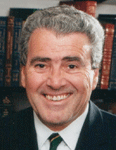Cover Story: The Evolution of MS Diagnosis, Treatment, and Care
Compiled and edited by Susan Wells Courtney
Reviewed by Dr. Jack Burks
Introduction: A Long and Difficult Road
The evolution of multiple sclerosis (MS) diagnosis, treatment, and care, from the early 1800s to today, has been an extremely long and difficult road for researchers, medical professionals, and members of the MS community alike. Through the 1800s and up until the mid 1900s, without the diagnostic tools of today, some individuals showing signs of MS may not have received a diagnosis during their lifetime.
Additionally, doctors did not know what might be causing MS or if it might be contagious. As more cases came to light over the years, more confusion occurred over what to do and how to treat this mysterious illness. Medical professionals and well-meaning laypeople were grasping at straws to find an effective treatment, relying on trial and error while testing a wide range of unusual medications and unexpected therapies.
Rigorous, randomized, double-blinded studies were necessary for effective treatments for MS to finally be identified. Despite nearly two centuries of scientific observation and research, the first real treatment did not become available until 1993. Diagnosis was another great challenge, and the tools needed for this did not become available until the mid-to-late 1900s. While the technologies are vastly improved, diagnosis still remains a challenge in some instances.
Members of the MS community may feel some comfort in knowing that their diagnosis can now be made with far more certainty than just a few decades ago. And for those with relapsing forms of MS, nine disease-modifying therapies are presently available to slow disease activity. These treatments have been of enormous benefit to the majority of individuals with MS.
For individuals with relapsing as well as progressive forms of MS, many resources are now available to help with medical care, wellness strategies, rehabilitation therapies, and assistive equipment. These are all aimed at making life with MS healthier, safer, more comfortable, and more productive. Research into potential treatments for progressive forms of MS, as well as repair of damaged myelin and nerves, continues at a rapid pace.
While no one welcomes MS into his or her life, this is a better time to be faced with the challenge. Between ongoing studies around the world, devoted MS organizations, and incredible teams of neurologists, nurses, and therapists, members of the MS community have more support and more hope for the future than ever before.
About this Article
This article is a collection of quotes from several top experts in the field of MS, each talking about the important contributions he or she has found to make a difference in the lives of individuals with MS. Some of the experts are members of MSAA’s Healthcare Advisory Council, while others are among the medical professionals with whom MSAA has worked previously, assisting with our various educational programs for patients and professionals. Space does not allow us to quote all of the wonderful MS experts with whom we have worked in the past, but we are extremely grateful for those willing and able to participate in this special article.
Our group of experts includes neurologists and researchers as well as nurses and therapists. Following our first two introductory experts, and before our closing message, we have grouped the balance of professionals in the following order: first by field, and then alphabetically within their field. We start with neurologists and researchers, then nurses, followed by therapists. Everyone is of equal importance in the care of individuals with MS, but grouping them this way allows for a smoother transition between topics.
Our first introductory contributor to this article is Thomas J. Murray, OC, MD – an MS historian who literally wrote the book on MS history! Titled Multiple Sclerosis: the history of a disease (Demos Medical Publishing, 2005), this reference, along with Dr. Murray, was of great help in developing our timeline. Many thanks also go to Dr. Randy Schapiro and speech-language pathologist Carrie Bruce for their contributions to the timeline. Space does not allow us to include all of the historical events that occurred during the past two centuries that helped to shape the history of MS, but we have highlighted some of the more notable ones.
In his quote, Dr. Murray gives a very brief history of MS treatments during the 1800s and early 1900s, leading up to the time when an accurate understanding of the disease became a reality. This is followed by our second introductory quote, from MSAA Chief Medical Officer Jack Burks, MD, who gives his insightful view of the past 50 years on the evolution of MS diagnosis, treatment, and care. From there, we have many interesting, informative, and inspiring contributions from 14 other experts.
Finally, we conclude our article with a closing message from Diana M. Schneider, PhD. She is a medical writer, publisher, and researcher – and a regular contributor to our magazine. Dr. Schneider may be best known at MSAA for her annual MS Research Updates. We hope you enjoy this collection of quotes from these highly regarded medical professionals!
Quotes

|
Thomas J. Murray, OC, MD, FRCPC…on the history of MS treatments |

|
Jack Burks, MD…comments from MSAA’s Chief Medical Officer |

|
Donald A. Barone, DO…on the evolution of diagnostic criteria in MS |

|
Allen C. Bowling, MD PhD…on wellness and complementary and alternative medicine |

|
Stephen Krieger, MD…on the rise of MS therapeutics and resources |

|
Fred D. Lublin, MD, FAAN…on the development of disease-modifying therapies |

|
Randall T. Schapiro, MD, FAAN…on symptom management |

|
June Halper, MSN, APN-C, MSCN, FAAN…on the MS Nurse and certification |

|
Dorothea Cassidy Pfohl, RN, BS, MSCN…on the evolution of nursing and treatment tools for MS |

|
Megan Weigel, DNP, ARNP-c, MSCN…on the importance of taking care of the whole patient |

|
Patty Bobryk, MHS, PT, MSCS, ATP…on the changing environment of MS rehabilitation care |

|
Carrie Bruce, MA, CCC-SLP, ATP…on the evolution of assistive devices and technologies |

|
Miriam Franco, MSW, PsyD…on the emotional and cognitive changes in MS |

|
Herb Karpatkin, PT, DSc, NCS, MSCS…on improving balance and preventing falls |

|
Pat Provance, PT, MSCS…on exercise and ambulation aids in MS rehabilitation |

|
Kathy Zackowski, PhD, OTR, MSCS…on occupational therapy, computer technology, and MS |

|
Diana M. Schneider, PhDClosing message…on future advances in MS |
